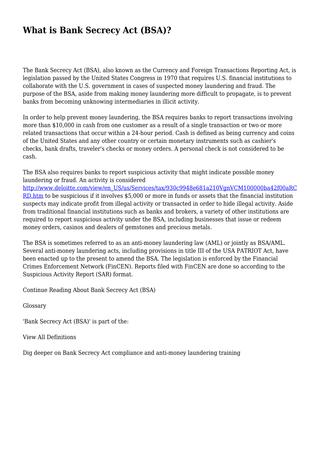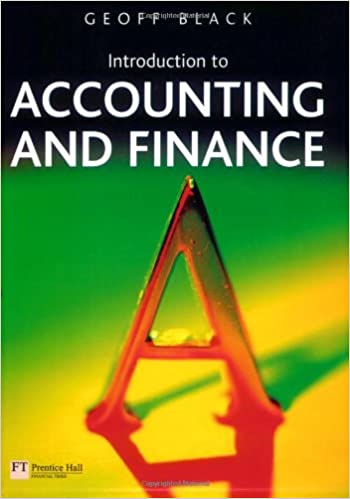Contents:


Other current liabilities vary depending on your occupation, your industry, or government regulations. In addition to business licenses and permits, some practitioners require annual licensing or continuing education. For example, individual architects in all 50 states require licenses with regular renewals. So do many engineering, construction, financial services, insurance, healthcare, dental, and real estate professionals. Be sure to include these expected expenses in your working capital formula.
They are normally found as a line item on the top of the balance sheet asset. An adequate amount of Net Working Capital would ensure that you earn a higher return on the amount invested in your current assets. For example, interest on short-term and long-term loans taken to finance such current assets. This is important because a weak liquidity position is a threat to your business’s solvency. Therefore, make sure you employ a judicious mix of short-term and long-term funds to fund your current assets. Examples of your current liabilities include accounts payable, bills payable, and outstanding expenses.
Business Cash Flow Management
So, in spite of having higher assets, the business would require borrowing from banks and other financial institutions, and hence it will create higher interest costs. Negative working capital suggests that the assets of the particular business are not effectively used, and it may lead to a liquidity crisis. There is no consideration of changes expected to occur in operating expenses in the coming years, as no effect of inflation is taken into account. A higher ratio means there’s more cash-on-hand, which is generally a good thing. A lower ratio means cash is tighter, so a slowdown in sales could cause a cash flow issue. Both companies have a working capital (assets – liabilities) of £500,000, but Company A has a working capital ratio of 2, whereas Company B has a ratio of 1.1.

The balance sheet lists assets by category in order of liquidity, starting with cash and cash equivalents. It also lists liabilities by category, with current liabilities first followed by long-term liabilities. The working ratio helps determine the company’s ability to meet its annual operating expenses from its annual gross revenue.
Measuring its investing activities include can give you a quantitative assessment of your business’ timely ability to meet financial obligations, including paying your employees, your suppliers, and your bills. This provides an honest picture of the company’s short-term financial health. To calculate your business’ net working capital , also known as net operating working capital , subtract your total current liabilities from your total current assets. Depending on how detailed you or your analyst wants your working capital calculation to be, you can choose from one of several different models. It is important to look at the working capital ratio across ratios and compare it to the industry to analyze the working capital.
Working Capital Requirement Formula
For a company to continue growing, they should invest extra funds into places that will help grow that asset either through interest, equity, or revenue generation. The working capital ratio is a measure of liquidity, revealing whether a business can pay its obligations. The ratio is the relative proportion of an entity’s current assets to its current liabilities, and shows the ability of a business to pay for its current liabilities with its current assets.

This is because it has an adequate amount of working capital to beat the competition. This content is for information purposes only and should not be considered legal, accounting, or tax advice, or a substitute for obtaining such advice specific to your business. No assurance is given that the information is comprehensive in its coverage or that it is suitable in dealing with a customer’s particular situation. Intuit Inc. does not have any responsibility for updating or revising any information presented herein. Accordingly, the information provided should not be relied upon as a substitute for independent research. Intuit Inc. does not warrant that the material contained herein will continue to be accurate nor that it is completely free of errors when published.
Example calculation with the working capital formula
This you can achieve by either taking additional debt, selling assets or shares, or increasing profits. As a business, your aim is to reduce an increase in the Net Working Capital. This is because an increase in the Net Working Capital would mean additional funds needed to finance the increased current assets. Furthermore, it helps in studying the quality of your business’s current assets.

Accept credit and debit cards, and email customers an invoice with a link to make payments. Offer customers a discount (1% to 2%) if they pay within five days of receiving the invoice. You’ll collect money faster, which may be more valuable than the 1% to 2% you lose when the customer takes the discount.
Download the Free Current Ratio Formula Template
Discover the 5 KPIs that will allow you to analyse your financial performance, predict growth and help you turn a profit. A lower working capital cycle is good for a company whereas a higher one stresses the Balance Sheet. Thus invest in companies with lower working capital cycles if all other metrics are strong. In, accounting terms working capital meaning is the difference between Current Asset and Current Liability . Refers to beginning and the end of the financial period, respectively. Analyze and optimize inventory management to reduce overstocking and the likelihood that inventory will need to be written off.
Common examples of current assets include cash, accounts receivable, and inventory. Examples of current liabilities include accounts payable, short-term debt payments, or the current portion of deferred revenue. Working capital is the funds a business needs to support its short-term operating activities.
There we can be facing another situation where current liabilities are just covered. Investors who review the working capital management from a turnover point of view can track this efficiency ratio trend and determine if the company is using better or worse its NWC. These two ratios are also used to compare a business’s current performance with prior quarters and to compare the business with other companies, making it useful for lenders and investors. Deferred revenue, such as advance payments from customers for goods or services not yet delivered. Positive working capital means the company can pay its bills and invest to spur business growth.
Working capital uses assets that are considered liquid in its equation since that counts as a way to fund a company’s operations in the short-term. Thus, in spite of looking at each and every current asset, one may have a look at the accounts receivable and inventory value along with the accounts payable. Thus, the financial health of the particular company can be fairly understood when it shows a positive value. Current assets typically include cash, marketable securities, accounts receivable, inventory, and prepaid expenses.
Assessing your farm’s financial health using your balance sheet – Farm and Dairy
Assessing your farm’s financial health using your balance sheet.
Posted: Thu, 09 Feb 2023 08:00:00 GMT [source]
This happens due to the timely payments you make to your suppliers and banking partners. Adequate Net Working Capital ensures that your business has a smooth operating cycle. This means the time needed to acquire raw material, manufacture goods, and sell finished goods is optimum. As the management accordingly manages all day-to-day required funds that help the authorized personnel timely pay for all the outstanding creates a value addition or goodwill enhancement in the market. By correctly analyzing the requirement of funds for day-to-day operations, the finance team can appropriately manage the funds and decide accordingly for available funds and availability of funds.
- Adequate working capital at Jack and Co’s disposal also contributes to increasing its profitability.
- Both metrics can be useful in assessing the financial health of a company.
- Companies, like Wal-Mart, are able to survive with a negative working capital because they turn their inventory over so quickly; they are able to meet their short-term obligations.
- Figuring out a good working capital ratio and then keeping an eye on your company’s cash flowcan help you understand when a shortfall lies ahead so you can take the necessary steps to maintain liquidity.
- For a company to continue growing, they should invest extra funds into places that will help grow that asset either through interest, equity, or revenue generation.
- It is calculated by dividing the current assets of your business with its current liabilities.
In contrast, capital-intensive https://1investing.in/ that manufacture heavy equipment and machinery usually can’t raise cash quickly, as they sell their products on a long-term payment basis. If they can’t sell fast enough, cash won’t be available immediately during tough financial times, so having adequate working capital is essential. Working capitalis the money a business can quickly tap into to meet day-to-day financial obligations such as salaries, rent, and office overheads. Tracking it is key, since you need to know that you have enough cash at your fingertips to cover your costs and drive your business forward. It doesn’t necessarily have any impact on the company’s working capital. Other ExpensesOther expenses comprise all the non-operating costs incurred for the supporting business operations.
There are several useful metrics that can help a company avoid these pitfalls. Working capital refers to the difference between a company’s current assets and current liabilities. Both metrics can be useful in assessing the financial health of a company. Before sharing a working capital ratio definition, it seems essential to remind what working capital is. It’s the amount of money you need in order to support your short-term business operations.
The working capital formula subtracts what a business owes from what it has to measure available funds for operations and growth. These measures the respective turnovers, e.g., days inventory outstanding means how many times the inventory was sold and replaced in a given year. Investing more money in inventory means keeping your cash idle and not putting it to use. Therefore, this results in decreased liquidity and makes your business less competitive.